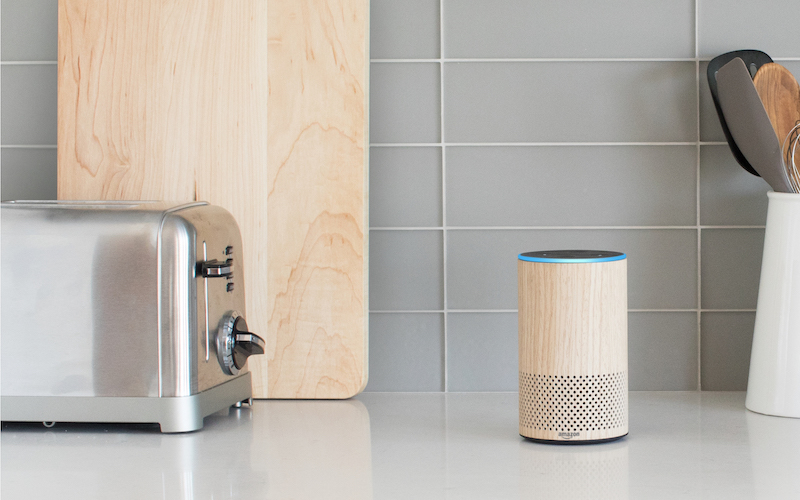As they said in The Matrix, “We marveled at our own magnificence as we gave birth to AI.” Smart speakers have brought artificial intelligence (AI) into our homes in a way that was incomprehensible only a few years ago. The AI that is responsible for the voice recognition in these devices is amazing and has made it dramatically easier to control our smart homes. Note, that I said “control our smart homes.”
For the most part, AI’s role in the smart home has simply been a new, and more convenient, way for people to control the devices in their home; using their voice. That is starting to change and for both integrators and homeowners there will be a dramatic transformation.
Integrators can offer homeowners true automation of their smart homes that matches the way the homeowner uses their home. The smart home processor/hub can be programmed to, for example:
- Know when the homeowners go to bed and get up in the morning. It can set back the thermostat so the house is comfortable for sleeping, restore the temperature in the home when the alarm clock sounds, and brew fresh coffee.
- Turn off lights and set back the thermostat when the home is unoccupied to save energy.
- Restore the home to its normal temperature when people return home and turn on pathway lights if they have returned at night for safety.
- And so much more.
But, all of the above requires a good programmer, who earns in excess of $100,000 per year, and therefore is very expensive to implement. The alternative is a smart home that learns how the homeowners use their home and takes actions that anticipate the homeowners’ needs. All this may sound like science-fiction but only a few years ago the same could be said about voice control.
We are just beginning to see products that include AI for the smart home. Here are a few examples
- Josh (www.josh.ai) is a voice controlled smart home system where voice is just the first step in the company’s plan for AI. An example are “recommendations” where Josh will tell a homeowner that they’ve left lights on in a room if the lights left on don’t fit how those lights are normally used.
- Like Josh, Amazon Alexa can provide “hints,” for example, to turn off lights that have been left on.
- Ambi Climate (www.ambiclimate.com) is an AI-powered controller for remote controlled air conditioners. It monitors temperature, humidity, sunlight, time of day, weather, and user input as to whether they are too hot or too cold. It uses this data to understand when people in the home are comfortable and learns to optimally adjust the air conditioning. (Check out more about this technology category from joyofandroid.com.)
- The Rachio irrigation controller (www.rachio.com) optimizes watering of a lawn. It uses the plant types, soil type, sun exposure, sprinkler head model, weather, and more to optimize the irrigation of a lawn to lower water consumption.
- Security cameras by Nest (https://nest.com/cameras/) can perform facial recognition, though it requires a subscription to Nest Aware.
The first step toward a truly sentient home is migrating to individual products that use AI to provide advanced capabilities. Unlike the smart home of today where programming costs are the responsibility of the individual homeowner, these products allow the programming costs to be shared among all purchasers of the products; which greatly reduces the cost to the individual. This allows the cost of advanced features to be much more affordable.
However, the best AI system still needs to initially be customized for an individual homeowner’s needs. For example, to turn on pathway lights at night the AI would need to be told which lights are in the primary pathway for the homeowners entering the home. The AI could, at that point, learn the homeowner’s habits and take additional actions. For example the AI might learn the following about the homeowner’s behavior.
- The AI might learn that the homeowner had been in the car for the last hour (based on a connected car system) and turn on additional lights to the closest bathroom when the homeowner arrives at night and the house is dark.
- The AI might, through the GPS on the homeowner’s phone, learn that the homeowner had been to the grocery store and turn on the kitchen light anticipating that the homeowner purchased groceries that need to be put away.
So, while a sentient, AI-based smart home is still years away, what steps can integrators and homeowners take today to make their home as smart as possible?
- Leverage individual products that include AI to make the device as smart as possible and reduce the amount of custom programming required. This includes task-based, AI-powered devices. For example, smart appliances in a kitchen that can help with cooking
- Wire a home for the sensors that will be necessary for a home to act intelligently as not all sensors will be wireless.
As I touched upon in my examples of how a home could learn and take actions to benefit homeowners, a sentient home will require advanced sensors. Ideally the home would be able to individually identify each member of a family and where they are in a home. The AI-based system could then, for example:
- Individually adjust the temperature in rooms based on who is in the room.
- Adjust lights in rooms based on user preference, turning off lights when rooms become unoccupied, and turning on lights as someone enters a room and the room is dark.
- Have individualized music and video follow a person as they walk through the home.
- Open/close shades based on personal preference, whether the sun is shining in through windows, and the need to possibly protect valuable art and furnishings from damage*
- Shut down a home at night when people go to bed (based on their act of going to bed, not on a fixed schedule) by turning off lights and setting back thermostats to both save money and provide a more comfortable sleeping environment.
The cost of the sensors necessary for a home to be sentient is a loss, real or perceived, of privacy. It is one thing for the code controlling a home to be running on a local processor/hub and have access to all this information about the occupants of a home. It is very different for the code, and all the information about the family, to run somewhere in the cloud on a server owned by Facebook, Google, or Amazon. Privacy is a topic I want to explore in more depth in an upcoming article.
*I have code on my github that allows a Crestron automation system to automatically open/close shades and drapes based on the angle/elevation of the sun, obstacles around a home (mountains, trees, etc.) that could block the sun, the weather, and more. The code is located here: https://github.com/jbasen/Crestron-Shade-Automation-Manager








